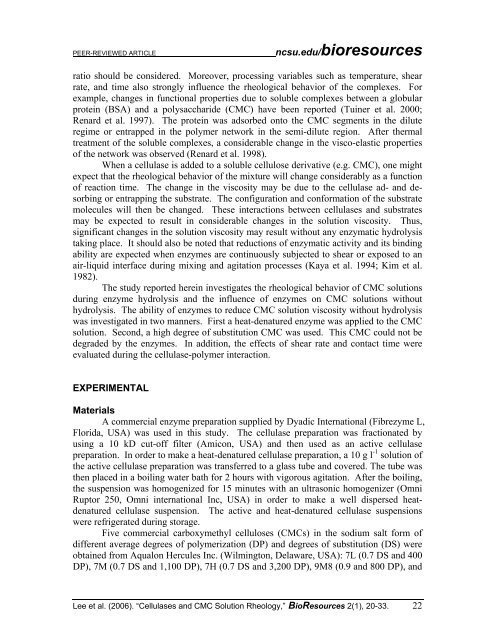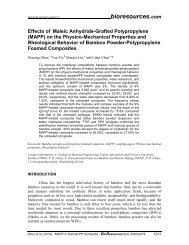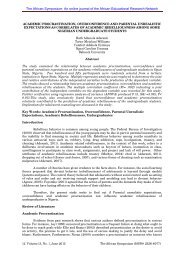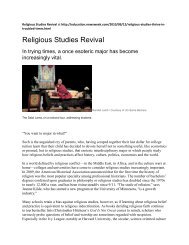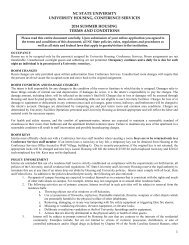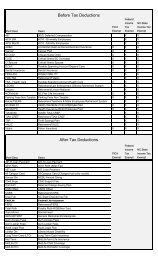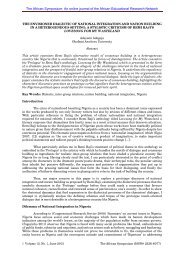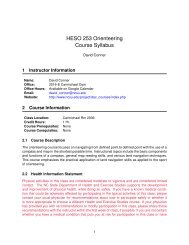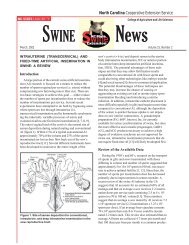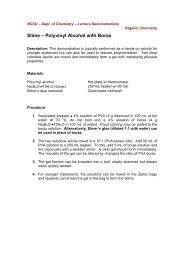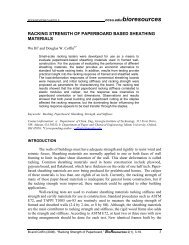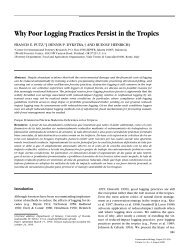Rheology of carboxymethyl cellulose solutions - North Carolina ...
Rheology of carboxymethyl cellulose solutions - North Carolina ...
Rheology of carboxymethyl cellulose solutions - North Carolina ...
You also want an ePaper? Increase the reach of your titles
YUMPU automatically turns print PDFs into web optimized ePapers that Google loves.
PEER-REVIEWED ARTICLE ncsu.edu/bioresources<br />
ratio should be considered. Moreover, processing variables such as temperature, shear<br />
rate, and time also strongly influence the rheological behavior <strong>of</strong> the complexes. For<br />
example, changes in functional properties due to soluble complexes between a globular<br />
protein (BSA) and a polysaccharide (CMC) have been reported (Tuiner et al. 2000;<br />
Renard et al. 1997). The protein was adsorbed onto the CMC segments in the dilute<br />
regime or entrapped in the polymer network in the semi-dilute region. After thermal<br />
treatment <strong>of</strong> the soluble complexes, a considerable change in the visco-elastic properties<br />
<strong>of</strong> the network was observed (Renard et al. 1998).<br />
When a cellulase is added to a soluble <strong>cellulose</strong> derivative (e.g. CMC), one might<br />
expect that the rheological behavior <strong>of</strong> the mixture will change considerably as a function<br />
<strong>of</strong> reaction time. The change in the viscosity may be due to the cellulase ad- and desorbing<br />
or entrapping the substrate. The configuration and conformation <strong>of</strong> the substrate<br />
molecules will then be changed. These interactions between cellulases and substrates<br />
may be expected to result in considerable changes in the solution viscosity. Thus,<br />
significant changes in the solution viscosity may result without any enzymatic hydrolysis<br />
taking place. It should also be noted that reductions <strong>of</strong> enzymatic activity and its binding<br />
ability are expected when enzymes are continuously subjected to shear or exposed to an<br />
air-liquid interface during mixing and agitation processes (Kaya et al. 1994; Kim et al.<br />
1982).<br />
The study reported herein investigates the rheological behavior <strong>of</strong> CMC <strong>solutions</strong><br />
during enzyme hydrolysis and the influence <strong>of</strong> enzymes on CMC <strong>solutions</strong> without<br />
hydrolysis. The ability <strong>of</strong> enzymes to reduce CMC solution viscosity without hydrolysis<br />
was investigated in two manners. First a heat-denatured enzyme was applied to the CMC<br />
solution. Second, a high degree <strong>of</strong> substitution CMC was used. This CMC could not be<br />
degraded by the enzymes. In addition, the effects <strong>of</strong> shear rate and contact time were<br />
evaluated during the cellulase-polymer interaction.<br />
EXPERIMENTAL<br />
Materials<br />
A commercial enzyme preparation supplied by Dyadic International (Fibrezyme L,<br />
Florida, USA) was used in this study. The cellulase preparation was fractionated by<br />
using a 10 kD cut-<strong>of</strong>f filter (Amicon, USA) and then used as an active cellulase<br />
preparation. In order to make a heat-denatured cellulase preparation, a 10 g l -1 solution <strong>of</strong><br />
the active cellulase preparation was transferred to a glass tube and covered. The tube was<br />
then placed in a boiling water bath for 2 hours with vigorous agitation. After the boiling,<br />
the suspension was homogenized for 15 minutes with an ultrasonic homogenizer (Omni<br />
Ruptor 250, Omni international Inc, USA) in order to make a well dispersed heatdenatured<br />
cellulase suspension. The active and heat-denatured cellulase suspensions<br />
were refrigerated during storage.<br />
Five commercial <strong>carboxymethyl</strong> <strong>cellulose</strong>s (CMCs) in the sodium salt form <strong>of</strong><br />
different average degrees <strong>of</strong> polymerization (DP) and degrees <strong>of</strong> substitution (DS) were<br />
obtained from Aqualon Hercules Inc. (Wilmington, Delaware, USA): 7L (0.7 DS and 400<br />
DP), 7M (0.7 DS and 1,100 DP), 7H (0.7 DS and 3,200 DP), 9M8 (0.9 and 800 DP), and<br />
Lee et al. (2006). “Cellulases and CMC Solution <strong>Rheology</strong>,” BioResources 2(1), 20-33. 22


